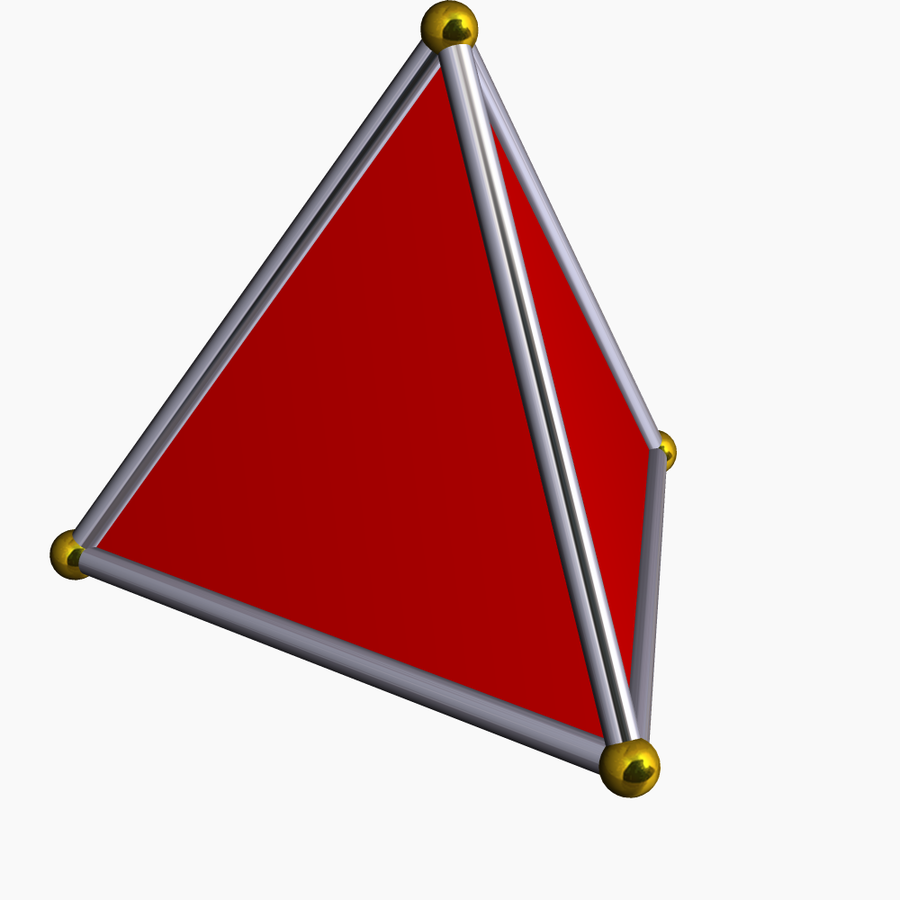What is the boundary of a boundary?
Intuitive Homology
Continuing the geometry discussion, let us start with an
elementary argument: Let us consider a triangle and label its vertex as A, B,
and C. How can we define its boundary? On the first try, it is easy: it is the sum
of the segments: AB, BC, CA. Now
consider a point D outside this
triangle (for definiteness let it be next to segment BC) and construct the quadrilateral:
ABDC. We would want to build up its boundary using the boundary of the two
triangles: ABC and BDC. The problem is that the segment BC is not part of the
boundary of ABDC and we need to add and subtract it at the same time. This
works if we consider oriented segments with
the convention that AB = -BA (here AB means walking from A and arriving at B).
So if A, B, and C are the original vertexes of the triangle, the boundary is: AB,
BC, -AC. Alternatively:
(noA)BC – A(noB)C + AB(noC).
Now this straightforwardly generalizes to a simplex given by vertexes A1 A2,…, An
to the following sum of lower dimensional simplexes:
Σk{(-1)k
A1 A2…Ak-1 Ak+1…An}
And we can then introduce a formal definition of a boundary
of a simplex (A1 A2,…, An):
∂(A1 A2,…,
An) = Σk {(-1)k (A1 A2…Ak-1
Ak+1…An)}
Key question: what
would be the boundary of a boundary of a simplex: ∂ ∂ (A1 A2,…,
An)? In the sum we would have to kill two elements i and j and we can do it in two different way: first kill i then j, or the other way around. For the sake of the argument assume i is smaller than j. What is the sign in front of the two terms?
- In one
case after eliminating the i component
the sign is (-1)i and
after eliminating the j component
is: (-1)j-1 because
the sum became smaller by one making the final answer : (-1)i (-1)j-1 = (-1)i+j-1
- In the
other case after eliminating the j
component the sign is (-1)j
and after eliminating the i component
is: (-1)i making the
final answer : (-1)i (-1)j = (-1)i+j
The key point is that the two terms cancel and the boundary of a boundary is zero.
But why bother with all this, what is the point? This is
essential because any smooth compact and oriented space can be approximated by
small enough simplexes, and that the inner boundaries between simplexes
cancel each other.
In general we want to
uncover the holes in a space because spaces
with different number or kinds of holes are different, and this is a great
tool for distinguishing spaces (for example a doughnut is different than a
sphere).
But how many spaces with holes do we know in physics?
Actually a lot if we think carefully. In physics they usually hide under the
term: boundary conditions. So what? We
want to solve problems (say the electric field distribution in electrostatic),
not classify spaces. But there is a very
deep connection between solving differential equations like Maxwell’s equations
and the classification of spaces. To understand the link we first need to
understand the concept of a hole. In general a hole has two key properties:
- has a boundary
- the boundary of a hole it is not the boundary of anything else
Why it is so? Property (1) is true because you can walk
around a hole in the space which contains it. For property (2) consider a ball.
The ball is hollow precisely when it is not filled. If the ball is filled and
solid, its surface is then the boundary of the material inside.
This will lead to “Ker
modulo Image” and “closed modulo
exact”, a mathematical pattern which occurs again and again in modern
physics. In particular, electric charges are best understood as “cohomology
classes of the Hodge dual of a two form”. This is a mouthful but it has
deep geometric interpretation which unlocks the proper understanding of Yang
Mills theory and the Standard Model. Stay tuned and I’ll explain all this using
only elementary arguments. The subject is a bit dry for now, but hang in there
because the physics payout is great.

No comments:
Post a Comment